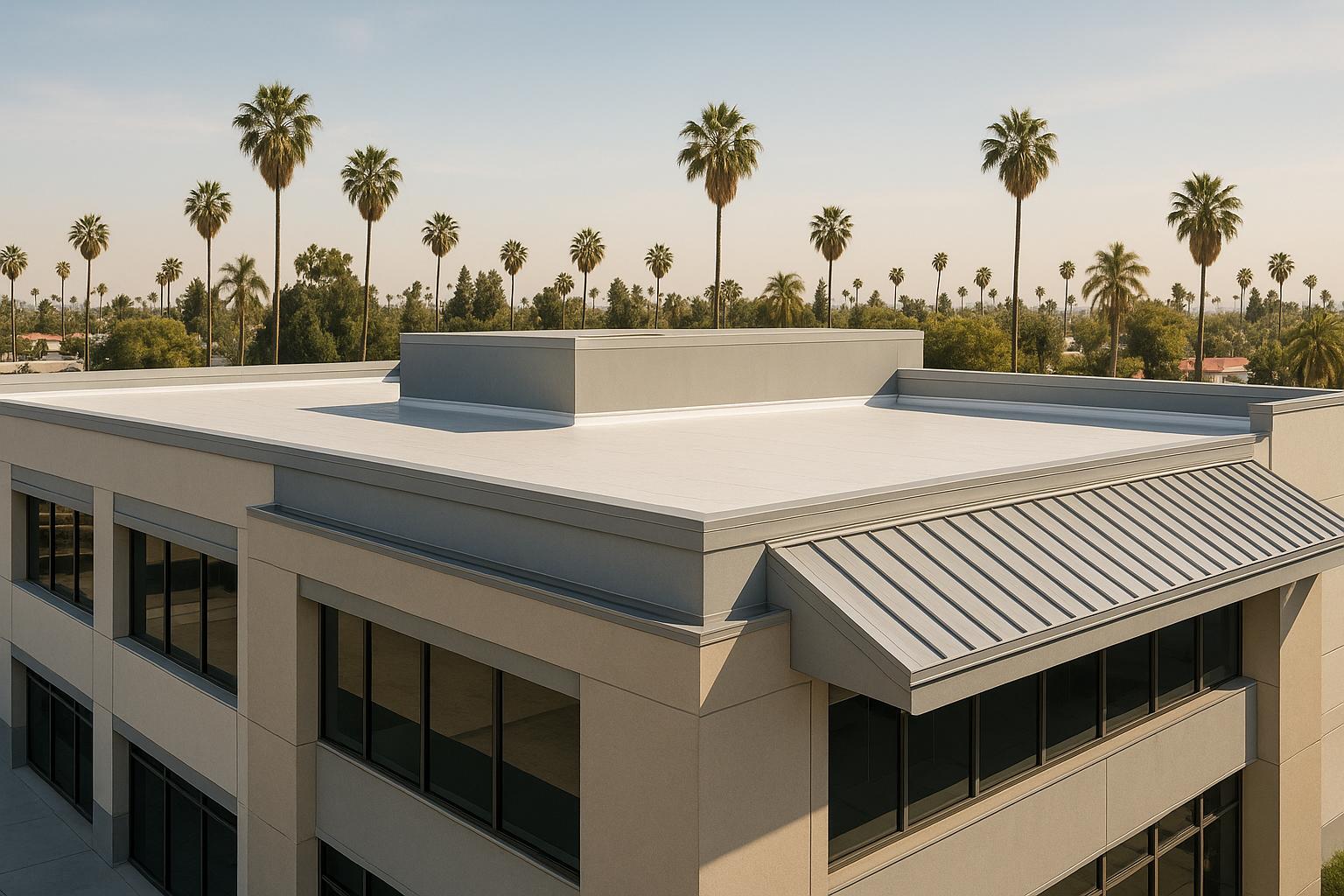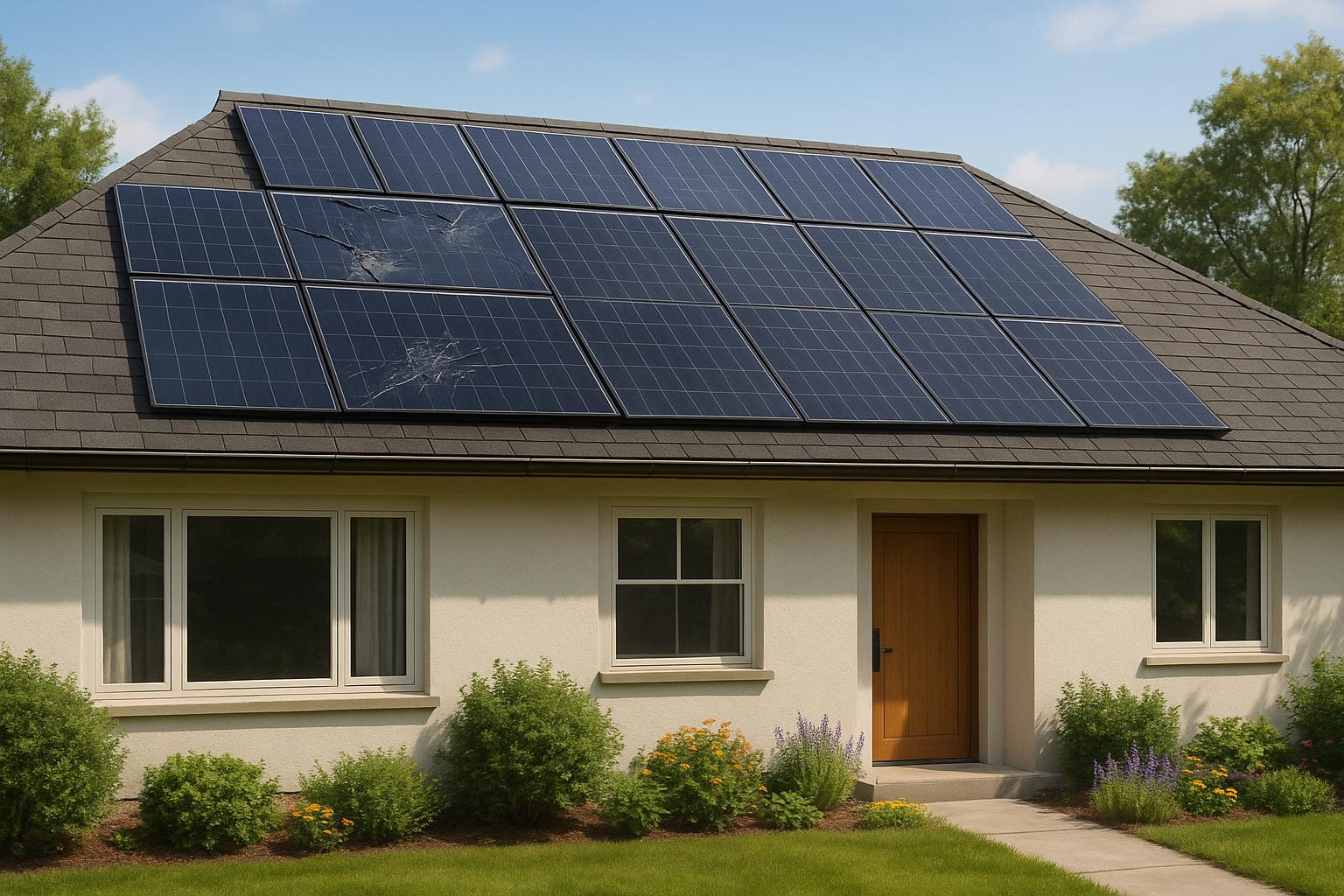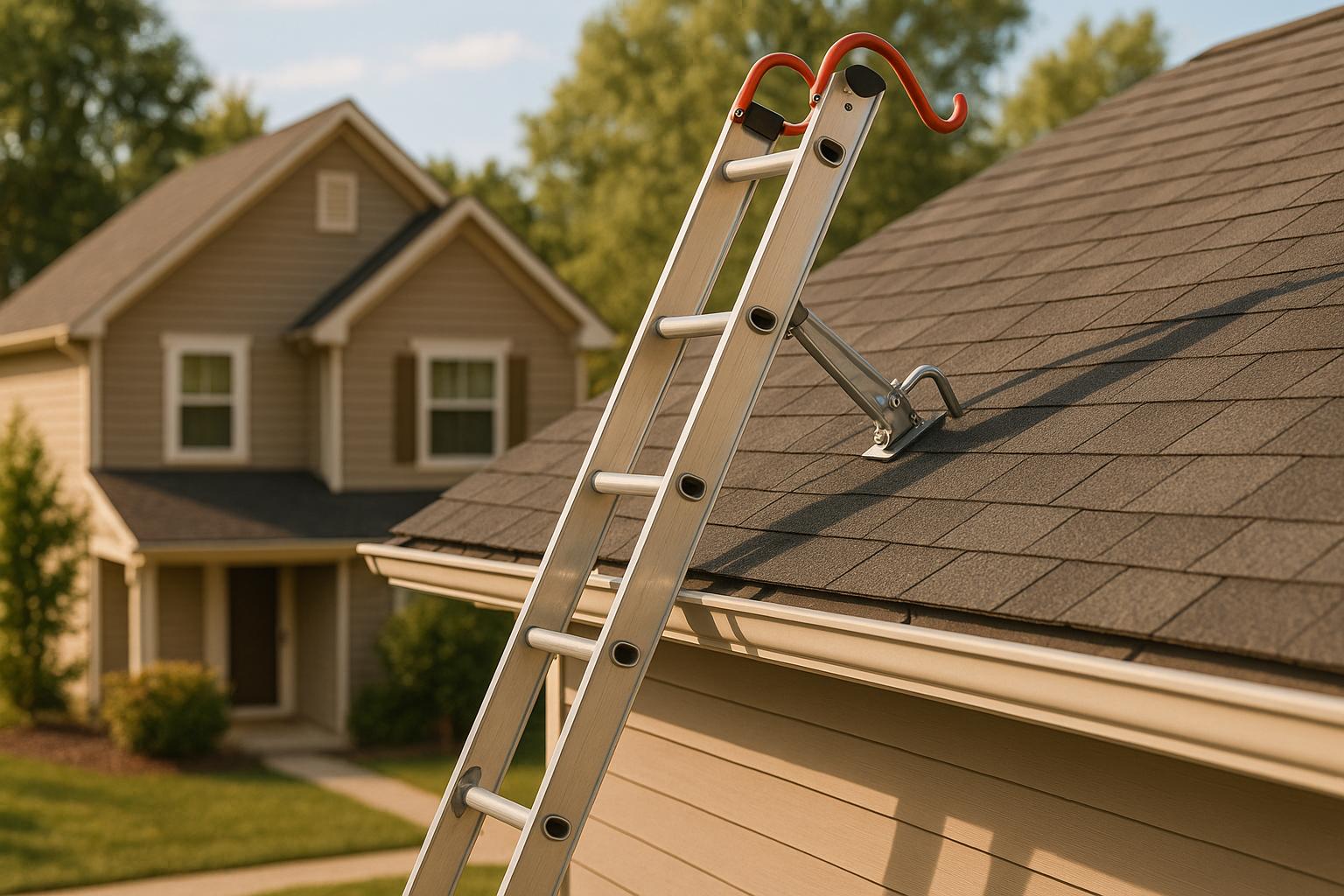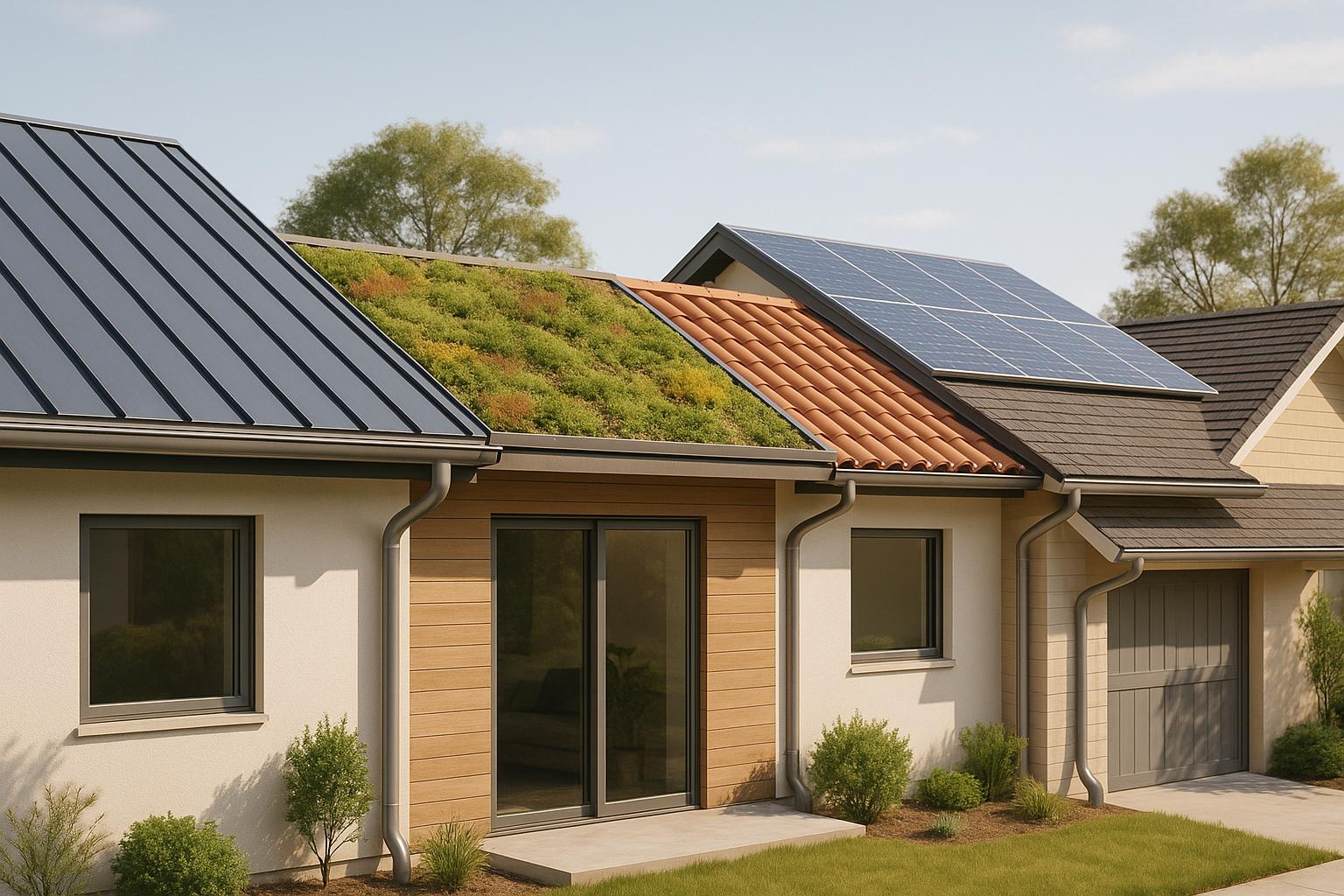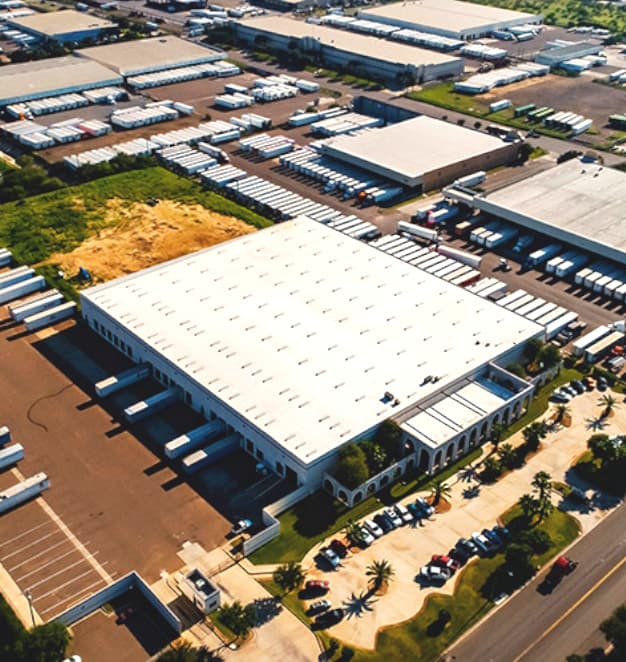Installing a commercial roof in Los Angeles involves several factors that affect costs, including materials, labor, and local requirements. Here’s a quick summary of the main points:
- Labor Costs: Make up 40–60% of the total expense.
- Material Costs: Vary by type:
- TPO: $4.00–$8.00 per square foot, lasting 15–30 years.
- PVC: $7.00–$12.00 per square foot, lasting 20–30 years.
- Metal Roofing: $7.24–$15.20 per square foot, lasting 40–70 years.
- Asphalt Shingles: $4.00–$6.00 per square foot, lasting 20–30 years.
- Local Regulations: Los Angeles’ "cool roof" rules and fire safety codes may increase costs.
- Additional Costs: Permit fees average $500, and maintenance expenses range from $0.15–$0.30 per square foot annually.
Key Takeaway: For long-term durability, metal or PVC roofs are ideal despite higher upfront costs. TPO offers budget-friendly energy efficiency, while asphalt shingles suit short-term needs. Your choice should depend on budget, property goals, and climate considerations.
Navigating Commercial Roof Replacement Costs & Financing | HP Roofing Pro
1. TPO Roofing
TPO (Thermoplastic Polyolefin) roofing has become a popular and cost-conscious choice for commercial properties in Los Angeles. Installation costs typically range between $4.00 and $8.00 per square foot, which includes the TPO membrane itself ($1.50–$3.50), labor ($2.50–$4.50), and necessary accessories ($1.00–$2.00).
Several factors influence the total cost. Roof size and design complexity – especially if there are multiple penetrations or unusual angles – can significantly impact labor and material expenses. Larger projects may benefit from economies of scale, while premium TPO membranes, though more expensive upfront, often provide better long-term durability and performance.
TPO roofing is particularly well-suited for Los Angeles’ climate. Its ability to withstand high heat makes it an excellent option for buildings exposed to extreme temperatures year-round. The material’s flexibility allows it to expand and contract with temperature changes without cracking or tearing, ensuring it holds up well over time. These qualities have made TPO increasingly popular for commercial properties in the area.
According to Roofing Wise LA, TPO stands out for its UV and heat resistance, which contribute to its long-lasting performance.
Another key advantage is TPO’s energy efficiency, aligning perfectly with Los Angeles’ cool roof standards. Its reflective surface helps reduce heat absorption by bouncing back the sun’s rays, which can lead to energy savings of up to 50%. Over time, these savings can help offset the initial installation costs. Combined with its durability, TPO proves to be a smart investment for properties in harsh climates.
In terms of durability, TPO roofing offers impressive stats. With proper installation and maintenance, these roofs typically last 15 to 30 years. TPO membranes are designed for resilience, boasting a tear strength of 55 lbf, a break strength of 427 lbf, and a compressive strength of up to 7,977 lbf. These features make TPO highly resistant to punctures and wear.
To maintain TPO roofing’s performance, regular cleaning and inspections are essential. Debris can reduce its reflectivity and durability, so following the manufacturer’s recommendations – such as low-pressure washing with mild cleaners – can prevent damage and keep the roof in top condition. Investing in routine maintenance can also extend the roof’s lifespan, reducing repair and replacement costs over time.
When planning a TPO installation, the condition of the existing roof is a key consideration. A complete tear-off will typically result in higher costs, while overlaying the TPO on an existing roof can lower expenses. Additionally, local regulations, such as Title 24, may require added insulation or specific installation techniques, which can also increase costs. These factors highlight the importance of tailoring each installation to meet the unique needs of the Los Angeles market.
2. PVC Roofing
PVC (Polyvinyl Chloride) roofing is considered a top-tier single-ply membrane option for commercial buildings in Los Angeles. Installation costs generally range from $7.00 to $12.00 per square foot. This pricing reflects its position as a premium choice, offering better durability and performance compared to alternatives like TPO.
For a typical 2,900-square-foot installation, the total cost – including materials, labor, removal, and disposal – averages around $3.10 per square foot. While the upfront investment is higher, PVC’s performance and longevity often make it worth the cost.
PVC roofing membranes are known for being flexible, lightweight, and completely waterproof. They also excel in resisting fire and chemical exposure. This makes them particularly suitable for Los Angeles, where roofs need to withstand intense UV rays and frequent temperature swings.
One of the key advantages of PVC roofing is its long lifespan. When installed and maintained properly, PVC roofs typically last 20 to 30 years, with some high-quality membranes exceeding 35 years. This extended lifespan reduces the need for frequent roof replacements, balancing out the initial expense over time. Additionally, PVC membranes are highly energy-efficient, which is a major plus in Los Angeles’ hot climate. Their reflective surfaces help lower cooling costs by deflecting solar heat.
However, several factors can impact the overall installation cost. PVC roofing requires skilled labor to ensure seams are properly sealed, and it’s not compatible with asphalt-based products. This often means the existing roof must be completely removed rather than overlaid, adding to the cost. Moreover, PVC membranes can shrink slightly over time, which may cause stress at corners and flashings, requiring occasional maintenance.
Maintenance for PVC roofing is relatively straightforward. Regular cleaning with a broom or a low-pressure water hose, along with periodic professional inspections, keeps the roof in good condition and helps maintain its reflective properties. Compared to other roofing options in Los Angeles, such as TPO or modified bitumen systems, PVC’s ease of maintenance and repair can lead to long-term savings.
Several factors influence the final cost of a PVC roofing project. These include building access, local building codes, and the condition of the existing roof. Properties with difficult access or complex roof designs may face higher labor costs, while buildings requiring a full tear-off instead of an overlay will incur additional removal and disposal expenses. Still, for those planning to maintain their roof for decades, PVC’s long-term performance and energy savings often make it a sound investment.
3. Metal Roofing
Metal roofing stands out as a solid choice for commercial buildings in Los Angeles, offering durability and the ability to handle the region’s tough climate. Installation costs for metal roofing typically range from $7.24 to $15.20 per square foot, covering both materials and labor. While the upfront cost is higher compared to some alternatives, the long-term benefits make it a worthwhile investment.
The pricing depends on the type of metal roofing system. For example, standing seam metal roofs cost between $10 and $16 per square foot, while corrugated metal roofs are slightly more affordable at $7 to $12 per square foot. Labor is a significant portion of the expense, accounting for 60% to 70% of total costs. To put this into perspective, metal roofing projects range from $600 to $1,900 per square, compared to $400 to $900 per square for asphalt shingles.
Metal roofs are particularly well-suited to Los Angeles’ climate. They perform exceptionally in the face of intense summer heat and occasional heavy rains. By reflecting sunlight, they can help reduce cooling costs by 10–25% and save up to 40% on energy expenses.
When it comes to longevity, metal roofing outshines many other materials. These roofs typically last 40 to 70 years, far surpassing the lifespan of asphalt shingles (20–25 years) and even tile roofs (about 50 years). This long lifespan translates to fewer replacements and lower overall costs over time.
Maintenance needs depend on the type of metal roofing system. Standing seam metal roofs generally require less upkeep, while screw-down systems may need screw replacements every 5–10 years to prevent leaks or panel issues. Routine inspections, which help ensure longevity, cost between $120 and $400, varying based on roof size, accessibility, and complexity.
Other factors also influence costs. Roof pitch, accessibility, and the need to remove an existing roof can all add to the expense. For example, complex designs with skylights or unusual angles may increase labor time and material waste. Additionally, tear-off projects (removing the old roof) can incur extra costs, averaging $76.00 per hour for removal and disposal.
Los Angeles’ intense UV radiation and heat can accelerate the wear and tear on roofing materials. However, metal roofs excel in this environment. They allow efficient rainwater runoff, resist fire, and, with regular debris clearing from gutters and drainage paths, maintain their performance even under challenging conditions.
While metal roofing comes with higher upfront costs, its durability, energy efficiency, and long lifespan make it a smart, long-term investment for commercial properties.
sbb-itb-d1d6490
4. Asphalt Shingles
Asphalt shingles are a popular and budget-friendly option for commercial roofing in Los Angeles. Their affordability and straightforward installation make them appealing, with costs typically ranging from $4 to $6 per square foot, though premium varieties can climb to $11.50 per square foot. For a standard 1,000-square-foot roof, replacement expenses generally fall between $4,750 and $10,000.
The lifespan and cost of asphalt shingles depend on the type you choose. Three-tab shingles last around 15–20 years, architectural shingles offer 20–30 years, and premium shingles can endure 30–40 years. This range allows businesses to weigh upfront costs against long-term value.
However, Los Angeles’ intense weather conditions can take a toll. Prolonged sun exposure, high temperatures, and UV radiation can cause shingles to become brittle, lose granules, fade, or curl prematurely, according to Roof Repairs CA. In Southern California’s inland areas, where conditions are even harsher, shingles may wear out faster, shortening their effective lifespan.
Maintenance for asphalt shingle roofs is both frequent and essential. Over a roof’s lifetime, maintenance costs average around $20,000, covering inspections, cleaning, repairs, gutter upkeep, pest control, roof coating, and flashing work. Regular maintenance is key to prolonging roof life, with proactive care preventing premature replacements in over 80% of cases. Tasks like securing loose shingles, clearing gutters, and ensuring proper attic ventilation are critical, with individual repairs typically costing $500 to $1,000.
When compared to other roofing options, asphalt shingles have the lowest upfront costs but may require more frequent replacements. For instance, metal roofing costs two to three times more initially but lasts significantly longer and requires less maintenance. For businesses planning long-term occupancy, this higher initial investment in metal roofing might prove more economical over time.
Despite these factors, asphalt shingles remain a go-to choice for many Los Angeles businesses, especially those prioritizing immediate cost savings or shorter-term occupancy solutions.
Advantages and Disadvantages
Choosing the right roofing system means weighing its benefits against potential drawbacks, especially when considering cost and durability. Understanding these trade-offs can help you make a decision that aligns with your business needs and budget.
TPO roofing stands out for its energy efficiency and resistance to UV rays. With a lifespan of 20–30 years and moderate costs, it’s a solid option for businesses in Los Angeles. The ability to lower cooling expenses during hot summers makes it appealing for those seeking a balance between performance and affordability.
PVC roofing is known for its durability, lasting 30–50 years, and its resistance to chemicals, oils, and extreme weather. While the upfront cost is higher, the extended lifespan can make it a worthwhile choice for properties with long-term occupancy plans.
Metal roofing offers unmatched longevity, with lifespans ranging from 35 to 70 years, and premium options like copper or zinc can last over a century. These roofs require minimal maintenance and outperform asphalt shingles in durability, reducing the need for replacements. However, potential downsides include noise during rain and aesthetic concerns like oil canning.
Asphalt shingles are the most budget-friendly option upfront, but they typically last only 20–30 years in California’s climate. They also require more frequent maintenance compared to metal roofing.
Here’s a quick comparison of the key factors for each material:
| Material | Cost per Sq Ft | Lifespan | Key Advantages | Main Disadvantages |
|---|---|---|---|---|
| TPO | $4.00–$8.00 | 20–30 years | Energy efficient, UV resistant | Shorter lifespan than premium options |
| PVC | $7.00–$12.00 | 30–50 years | Durable, chemical resistant | Higher upfront cost |
| Metal | $7.24–$15.20 | 35–70+ years | Low maintenance, long lifespan | Higher initial cost, potential noise |
| Asphalt Shingles | $4.00–$6.00 | 20–30 years | Lowest upfront cost, easy to install | Requires frequent maintenance |
Los Angeles’ Mediterranean climate – with its hot summers and mild, wet winters – plays a critical role in roof performance. Intense UV exposure and occasional temperature swings can shorten roof lifespans. Allocating about $0.15 to $0.30 per square foot annually for maintenance is a practical starting point, no matter the material.
Labor costs, which make up 40%–60% of total roofing expenses, further emphasize the importance of selecting durable materials. While options like metal or PVC may have higher initial costs, their longevity and lower maintenance needs often make them cost-effective choices for long-term property owners.
Ultimately, your decision should reflect your specific circumstances. If you’re planning a short-term stay, the low upfront costs of asphalt shingles might make sense. But for long-term investments, the durability and reliability of metal or PVC roofing systems are often worth the higher initial expense. Los Angeles’ demanding climate makes it crucial to choose a system that balances cost, durability, and maintenance needs effectively.
Final Recommendations
When planning for your LA property’s roofing needs, it’s essential to weigh upfront costs against long-term value. Here are tailored suggestions based on your project’s scope, budget, and performance requirements:
For Budget-Conscious Property Owners:
If you’re looking to minimize initial expenses and plan to hold the property for less than 15 years, asphalt shingles are a practical choice. They cost around $4.00–$6.00 per square foot and are ideal for short-term occupancy, though they require more frequent maintenance.
For Long-Term Investment Properties:
TPO roofing is a solid option for commercial properties, striking a good balance between cost and performance. With prices ranging from $6.00–$12.00 per square foot, it provides excellent energy efficiency – particularly valuable during LA’s hot summers – and has a lifespan of 20–30 years. Its popularity, covering nearly 40% of the commercial roofing market, underscores its reliability.
For Premium Durability Needs:
Metal roofing, though more expensive upfront at $10.50–$18.50 per square foot, offers unmatched longevity, often exceeding 50 years. It can also deliver annual energy savings of 10–25%, making it a great fit for large commercial buildings where long-term savings and minimal maintenance are top priorities.
For Chemical-Resistant Applications:
If your property involves exposure to chemicals – such as restaurants, manufacturing facilities, or storage for chemical products – PVC roofing is a wise investment. While it costs $10.00–$12.50 per square foot, its 30–50 year lifespan and strong resistance to chemicals make it the go-to choice for specialized uses.
Building Size Considerations:
For roofs larger than 10,000 square feet, metal or PVC roofing is recommended. These materials reduce long-term maintenance disruptions and costs, making them more suitable for expansive properties.
Maintenance Planning:
Set aside $0.15–$0.30 per square foot annually for maintenance. Regular inspections, ideally in the spring and fall, are crucial for keeping warranties valid and extending the roof’s lifespan to 20–40 years.
Energy Efficiency Incentives:
Boosting your roof’s energy performance can provide financial benefits. Using cool roof coatings or ENERGY STAR–certified materials could qualify you for a $500 tax credit. These improvements also help cut cooling costs, enhancing your overall return on investment.
Professional Partnership:
To ensure optimal results, collaborate with experienced contractors like Prime American Roofing. Labor is a significant expense, and their expertise in Southern California’s climate can help with material selection, permitting, and maintenance planning.
Every roofing system comes with its own mix of cost, durability, and energy efficiency. Given the demands of LA’s climate, prioritizing long-lasting and energy-efficient materials often justifies a higher upfront investment, delivering better performance over time.
FAQs
What should I consider when choosing between TPO, PVC, metal, and asphalt shingle roofing for a commercial property in Los Angeles?
When choosing a roofing material for your commercial property in Los Angeles, you’ll want to weigh factors like how long it lasts, how well it conserves energy, and how it performs in the local climate. Here’s a quick look at some popular options:
- TPO roofing: This material stands out for its strong heat resistance and energy-saving properties, making it a smart pick for LA’s warm weather and flat roof designs.
- PVC roofing: Known for its durability and fire resistance, PVC works well for commercial buildings with high foot traffic and can handle the heat effectively.
- Metal roofing: With its impressive strength and long lifespan, metal roofing offers excellent protection, especially for properties requiring extra durability.
- Asphalt shingles: While more commonly used on homes, asphalt shingles need a roof slope of at least 2:12, which makes them less practical for flat commercial roofs.
Your final choice should align with your building’s structure, budget, and how well the material can handle Los Angeles’ sunny, warm climate. TPO and PVC are particularly popular in the area because they combine durability with energy-saving benefits.
How do Los Angeles regulations and climate impact the cost and choice of materials for commercial roofing?
Los Angeles has strict building codes, including the Cool Roof Ordinance, which mandates that roofing materials meet specific energy efficiency and reflectivity standards. The goal is to minimize heat absorption and reduce energy use. As a result, many roofs in the area require reflective or energy-efficient materials, which can drive up costs.
On top of that, LA’s hot, dry climate and the constant threat of wildfires call for fire-resistant and durable roofing materials that can handle extreme heat and prolonged exposure to intense sunlight. These environmental demands, combined with the need to comply with local regulations, play a major role in shaping both the cost and the choice of commercial roofing systems in Los Angeles.
What are the best ways to maintain a commercial roof in Los Angeles for long-lasting performance?
Maintaining your commercial roof in Los Angeles is crucial for ensuring its longevity and performance. Start by scheduling regular inspections – aim for twice a year and after any significant weather events. These checks help identify potential problems early before they escalate. Also, make it a habit to clear away debris, like leaves and branches, and ensure your drains and gutters are free of blockages to prevent water from pooling.
Don’t overlook minor repairs. Tackling small issues promptly can save you from dealing with larger, costlier damage later on. Periodic cleaning is another essential step, as it helps maintain both the roof’s appearance and structural integrity. With proper upkeep, commercial roofs in Southern California can last anywhere from 20 to 30 years, providing dependable protection and long-term value.

